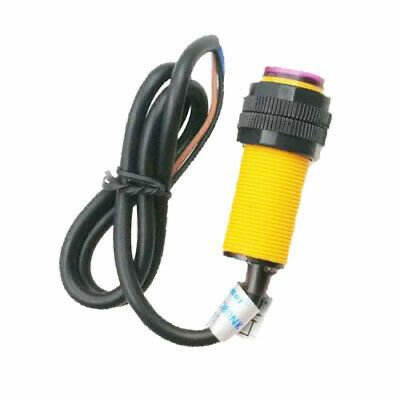
### Infrared Rays Waterproof Sensor Overview
1. **Type**: Infrared Rays Waterproof Sensor
2. **Specifications**:
– **Detection Type**: Infrared (IR) sensor
– **Waterproof Rating**: Typically rated as IP65 or IP67, indicating protection against water ingress
– **Detection Range**: Varies, commonly from a few centimeters to several meters
– **Power Supply**: Usually 5V to 12V DC, depending on the sensor model
– **Output Type**: Analog or digital output, depending on the sensor?s design
3. **Material**:
– **Sensor Body**: Made from waterproof materials such as plastic or metal with protective coatings
– **Lens**: Often made from IR-transparent materials like acrylic or polycarbonate
4. **Functionality**:
– **Detection**: Uses infrared light to detect objects or changes in the environment, such as motion or distance.
– **Waterproof Design**: Sealed to prevent water ingress, making it suitable for use in wet or outdoor environments.
– **Output**: Provides a signal (analog or digital) indicating the presence or absence of detected IR reflections.
5. **Features**:
– **Waterproof Construction**: Ensures reliable operation in harsh or wet conditions.
– **Adjustable Range**: Some models allow adjustments to the detection range or sensitivity.
– **Durable Design**: Built to withstand environmental factors such as rain, dust, and temperature variations.
### Typical Uses:
– **Outdoor Applications**: Suitable for use in outdoor environments where exposure to water or moisture is a concern.
– **Weather Monitoring**: Used in weather stations to detect rainfall or other environmental changes.
– **Automated Systems**: Integrated into automated systems for detecting objects or people in harsh conditions.
– **Security Systems**: Used in security systems to detect motion or intrusions in wet or outdoor areas.
### Key Benefits:
– **Reliable in Wet Conditions**: Waterproof design ensures functionality in various weather conditions.
– **Versatile Detection**: Can be used for a range of applications, including motion detection, distance measurement, and environmental monitoring.
– **Durable**: Built to handle exposure to elements and potential physical impacts.
### How to Use:
1. **Installation**: Mount the sensor in the desired location, ensuring it is properly sealed and secured to avoid water ingress.
2. **Power Connection**: Connect the sensor to a suitable power source according to the specifications.
3. **Output Connection**: Connect the output signal to a controller or monitoring system to process the sensor data.
4. **Calibration**: If applicable, calibrate the sensor to adjust the detection range or sensitivity as needed.
### Example Applications:
– **Rain Gauges**: Used in rain gauges to detect and measure rainfall.
– **Outdoor Security**: Integrated into outdoor security systems for motion detection in all weather conditions.
– **Industrial Automation**: Employed in industrial settings where exposure to water or moisture is common.
### Installation Tips:
– **Ensure Proper Sealing**: Confirm that the sensor is installed with proper sealing to maintain its waterproof rating.
– **Check Compatibility**: Verify that the sensor’s output type and power requirements match your system.
– **Regular Maintenance**: Inspect and clean the sensor regularly to ensure optimal performance and longevity.
### Advantages:
– **Waterproof Reliability**: Operates effectively in wet or outdoor environments.
– **Wide Application Range**: Suitable for various applications, from weather monitoring to security.
– **Durable Construction**: Designed to withstand environmental challenges and provide long-term use.
The Infrared Rays Waterproof Sensor is a versatile and reliable component for detecting infrared signals in challenging environments. Its waterproof design and durable construction make it suitable for a range of outdoor and industrial applications.


Reviews
Clear filtersThere are no reviews yet.